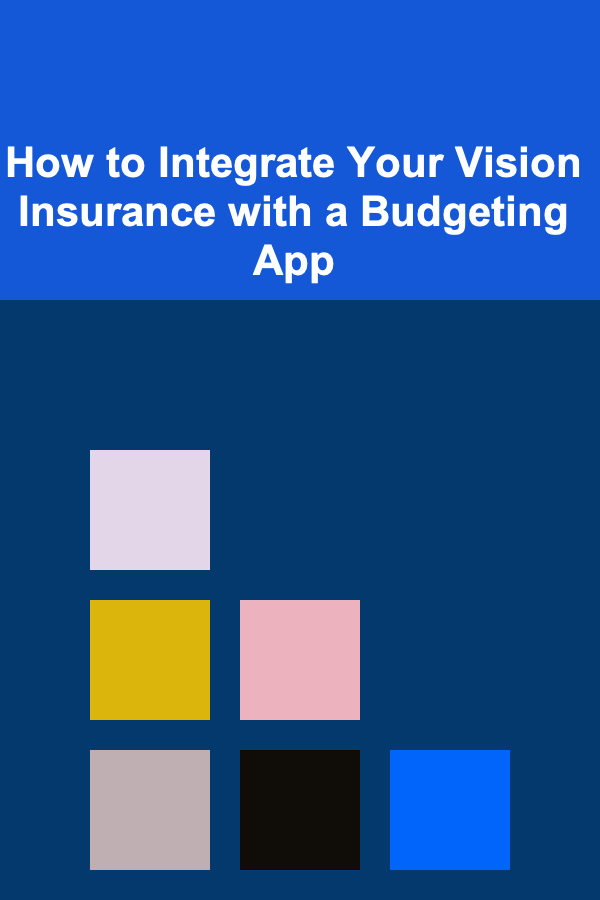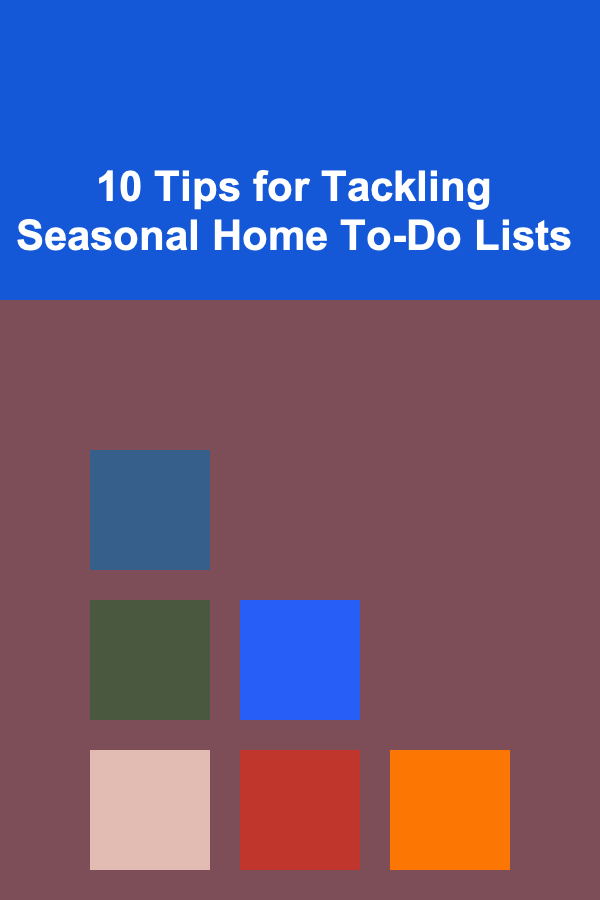
How to Integrate Your Vision Insurance with a Budgeting App
ebook include PDF & Audio bundle (Micro Guide)
$12.99$5.99
Limited Time Offer! Order within the next:

In today's fast-paced world, managing health-related expenses is just as important as handling your day-to-day spending. With the rise of digital solutions, budgeting apps have become essential tools for tracking and managing finances. But what happens when you combine these tools with specific types of insurance, like vision insurance?
Vision insurance is an often overlooked yet important aspect of many people's healthcare coverage. However, understanding how to efficiently integrate this insurance with your budgeting app can help you plan and optimize your healthcare spending, ensuring that you stay on top of your financial health as well as your physical health.
This guide explores how to integrate your vision insurance into your budgeting app, including the benefits, step-by-step instructions, and tips for maximizing the value of your vision coverage.
Why Integrate Vision Insurance with Your Budgeting App?
The integration of vision insurance with your budgeting app offers a variety of benefits, from simplifying financial tracking to improving your ability to plan for both expected and unexpected vision-related expenses. Below are some of the top reasons why it's worth considering:
- Efficient Tracking of Expenses: By linking your vision insurance to a budgeting app, you can easily track out-of-pocket expenses related to eye exams, glasses, contact lenses, and other vision services.
- Clearer Insight into Healthcare Costs: Integration allows you to have a clear view of both covered and uncovered vision-related expenses, helping you make more informed financial decisions.
- Avoid Unexpected Costs: Vision insurance can cover many costs, but there are always co-pays, deductibles, and other expenses that may come out of your pocket. Tracking these expenses within your budgeting app helps you avoid surprises and plan accordingly.
- Maximize Benefits: Many people are unaware of all the services covered by their vision insurance. By integrating this insurance with your budgeting app, you can keep track of all available benefits and use them before they expire.
Now that you understand the importance of integrating your vision insurance with your budgeting app, let's dive into how you can do this effectively.
Step 1: Choose the Right Budgeting App
The first step in this process is selecting a budgeting app that supports health insurance management and can handle the intricacies of vision care. There are several budgeting apps available, but not all of them have the functionality to track specific types of insurance, such as vision. Here are some popular apps that can integrate insurance-related data:
Mint
Mint is one of the most well-known budgeting apps, and it offers robust expense tracking features. While it doesn't have a direct feature to integrate vision insurance, it allows you to create custom categories for medical and vision-related expenses, which can help you manually track your coverage.
YNAB (You Need A Budget)
YNAB focuses on giving you control over your spending by helping you allocate funds toward specific goals. You can create a separate category for vision insurance and allocate funds towards your vision-related needs, making it easier to budget for eye exams, glasses, or contacts.
PocketGuard
This app tracks your spending and compares it against your income to help you avoid overspending. It includes budgeting categories for health-related expenses, which can be customized for vision care. PocketGuard also supports bill tracking, which can help you stay on top of your insurance premiums.
GoodBudget
A more manual app, GoodBudget lets you create envelopes for specific spending goals. You can set up an envelope for vision expenses, helping you allocate money throughout the year for vision care.
Step 2: Link Your Vision Insurance Provider to the App
Once you've chosen your app, the next step is to link your vision insurance provider. While some apps have direct integration with insurance companies, many will require you to enter the details manually. Here's what you need to do:
-
Obtain Your Vision Insurance Details: To link your insurance provider, you'll need to gather your policy details, such as:
- Insurance company name
- Policy number
- Coverage details (what's included and excluded)
- Co-pays, deductibles, and maximum limits
-
Manual Tracking: If the app doesn't support direct integration, you can manually input your vision insurance information. Some apps allow you to create recurring expenses for monthly premiums, which is helpful if you have regular charges for vision insurance.
-
Set Up Notifications for Renewals or Claims: Set reminders within the app to alert you when your vision insurance policy is up for renewal or when claims need to be submitted. This can help you avoid missing critical dates and deadlines.
Step 3: Categorize Vision-Related Expenses
Once your insurance details are in place, you need to categorize any expenses related to your vision care. Most budgeting apps allow you to create custom categories for expenses, which you can use for this purpose.
- Eye Exams: If your vision insurance covers eye exams, you can categorize expenses related to them. Make sure to track both co-pays and any additional charges that may not be covered by insurance.
- Glasses and Contact Lenses: If you need new glasses or contacts, these expenses can quickly add up. Some apps allow you to upload receipts or take photos of them, so you don't forget to enter them into your budget.
- Vision Surgery or Specialty Treatments: If you opt for procedures like LASIK or other treatments not fully covered by insurance, categorize these as medical expenses.
Step 4: Track Your Vision Insurance Benefits
Vision insurance often has specific benefits, such as annual coverage for eye exams, discounts on eyewear, or reimbursement for contact lenses. Integrating your vision insurance with your budgeting app helps you keep track of these benefits, ensuring that you use them before they expire.
- Track Benefit Limits: Many vision insurance plans have yearly limits on coverage. Your app can help you track how much you've used from these limits and how much you have left. For example, if your insurance covers $100 for glasses every year, tracking this amount helps you plan for next year's purchase.
- Keep an Eye on Premiums: If you're paying monthly premiums for your vision insurance, make sure that they are included in your budget. Some apps automatically categorize these as recurring expenses.
- Monitor Claims and Reimbursements: Vision insurance may reimburse you for certain expenses. You can track when you file a claim and monitor any reimbursements to make sure that you're receiving the correct amount.
Step 5: Set Up Financial Goals for Vision-Related Expenses
Once you have the basics set up, it's time to take your financial planning to the next level. Set specific goals for your vision-related expenses, whether it's saving for new glasses, eye surgery, or simply budgeting for routine check-ups.
- Create a Vision Care Fund: Allocate a specific amount of your monthly budget toward vision-related expenses. This will help you save for upcoming eye exams or eyewear purchases.
- Plan for Upgrades: If you're planning to upgrade to higher-end eyewear or try new treatments like LASIK, set a savings goal for this in your app.
- Track Savings Progress: Use the budgeting app to track your progress toward your vision-related goals, so you know when you've hit your target.
Step 6: Use Your App's Reports to Analyze Vision Care Spending
Most budgeting apps provide detailed reports that give you insights into where your money is going. These reports can be invaluable for identifying trends in your vision care spending and planning for future expenses.
- Review Trends: Look at your spending over time to see if you're consistently going over budget on vision care. This can indicate that you need to adjust your spending habits or explore other vision insurance options.
- Optimize Spending: Use reports to identify areas where you can save, such as opting for more affordable glasses or finding in-network providers to reduce out-of-pocket costs.
Step 7: Explore Integration with Health Savings Accounts (HSAs) or Flexible Spending Accounts (FSAs)
If you have an HSA or FSA, these accounts can also be integrated with your budgeting app. Vision care is an eligible expense under both types of accounts, and having them linked can simplify tracking.
- Allocate Funds: If you have an HSA or FSA, you can allocate funds specifically for vision care within your app. This ensures that you're making the most of your tax-free contributions.
- Track Withdrawals: Many apps let you track withdrawals from these accounts, making it easier to know when you've used up your funds for the year.
Final Thoughts
Integrating your vision insurance with your budgeting app is a smart way to stay organized and proactive about managing your eye care expenses. By tracking your premiums, benefits, and out-of-pocket costs, you can avoid surprises and ensure that your vision care is aligned with your overall financial goals.
Whether you're saving for new glasses, monitoring annual check-ups, or budgeting for LASIK surgery, a well-integrated system will streamline your financial life. Make sure you choose the right app, set realistic goals, and keep track of every vision-related expense to get the most out of your vision insurance.
Remember, managing your finances is a continuous process. As you adjust your goals and track your vision care spending over time, your budgeting app will become an invaluable tool for both your health and financial well-being.
Reading More From Our Other Websites
- [Home Renovating 101] How to Choose Lighting Fixtures That Enhance Your Space
- [Organization Tip 101] How to Set Up a Plant Care Station in Your Hobby Room
- [Home Renovating 101] How to Renovate Your Home for Better Indoor Air Quality
- [Personal Investment 101] How to Successfully Implement House Hacking to Accelerate Your Real Estate Investing Journey
- [Gardening 101] Designing a Butterfly Garden: Tips for Every Season
- [Tiny Home Living Tip 101] Best Multi‑Functional Furniture Ideas to Maximize Tiny Home Space
- [Home Staging 101] How to Stage Your Home to Appeal to Eco-Conscious Buyers
- [Home Space Saving 101] How to Maximize Bathroom Space with Clever Storage Solutions
- [Home Holiday Decoration 101] How to Repurpose Everyday Items for Holiday Decorations
- [Survival Kit 101] Why You Should Consider a Pre-Built Survival Kit for Your Emergency Plan

How to Design a Functional and Organized Craft Area
Read More
How to Use Technology to Help Manage Clutter
Read More
Understanding VR Accessibility: A Deep Dive
Read More
How to Incorporate Vintage Fabrics into Hat Making
Read More
10 Tips for Tackling Seasonal Home To-Do Lists
Read More
10 Tips for Securing Film Permits and Location Agreements
Read MoreOther Products

How to Design a Functional and Organized Craft Area
Read More
How to Use Technology to Help Manage Clutter
Read More
Understanding VR Accessibility: A Deep Dive
Read More
How to Incorporate Vintage Fabrics into Hat Making
Read More
10 Tips for Tackling Seasonal Home To-Do Lists
Read More